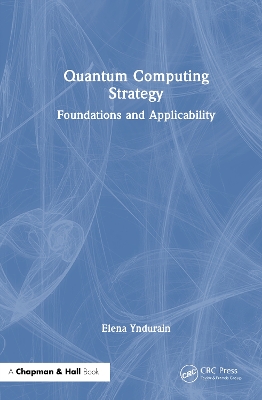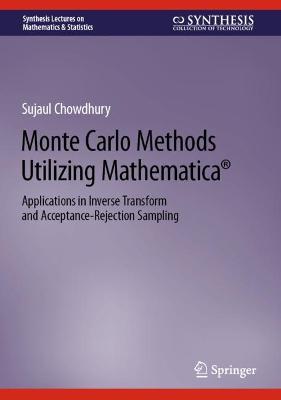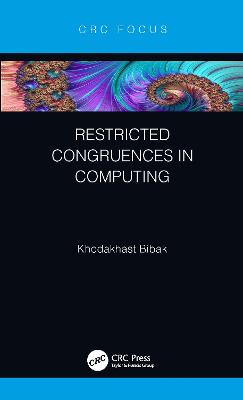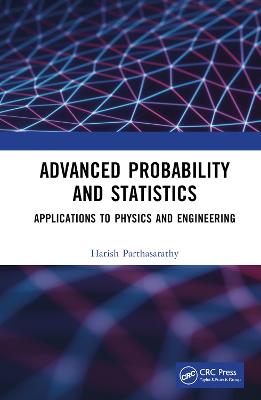Gentle Introduction to Scientific Computing
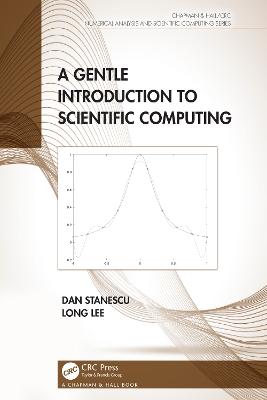 portes grátis
portes grátis
Gentle Introduction to Scientific Computing
Lee, Long; Stanescu, Dan
Taylor & Francis Ltd
05/2022
282
Dura
Inglês
9780367206840
15 a 20 dias
680
Descrição não disponível.
1. Introduction. 1.1. Scientific Computing. 1.2. MATLAB: what and why? 1.3. A Word of Caution. 1.4. Additional Resources. 2. Vectors and Matrices. 2.1. Unidimensional Arrays: Vectors. 2.2. Bidimensional Arrays: Matrices. 2.3. Matrix Operations. 2.4. Systems of Linear Equations. 2.5. Eigenvalues and Eigenvectors. 2.6. Operation Counts. 2.7. Exercises. 3. Basics of MATLAB. 3.1. Defining and Using Scalar Variables. 3.2. Saving and Reloading the Workspace. 3.3. Defining and Using Arrays. 3.4. Operations on Vectors and Matrices. 3.5. More on Plotting Functions of One Variable. 3.6. Loops and Logical Operators. 3.7. Working with indices and arrays. 3.8. Organizing Your Outputs. 3.9. Number representation. 3.10. Machine epsilon. 3.11. Exercises. 4. Solving Nonlinear Equations. 4.1. The Bisection Method for Root-Finding. 4.2. Convergence Criteria and Efficiency. 4.3. Scripts and Function Files. 4.4. The False Position Method. 4.5. The Newton-Raphson Method for Root-Finding. 4.6 Fixed Point Iteration. 4.7. MATLAB built-in functions. 4.8. Exercises. 5. Systems of Equations. 5.1. Linear Systems. 5.2. Newton's Method for Nonlinear Systems. 5.3. MATLAB built-in functions. 5.4. Exercises. 6. Approximation of Functions. 6.1. A hypothetical example. 6.2. Global Polynomial Interpolation. 6.3. Spline Interpolation. 6.4. Approximation with Trigonometric Functions. 6.5. MATLAB built-in functions. 6.6. Exercises. 7. Numerical Differentiation. 7.1. Basic Derivative Formulae. 7.2. Derivative Formulae Using Taylor Series. 7.3. Derivative Formulae Using Interpolants. 7.4. Errors in Numerical Differentiation. 7.5. Richardson Extrapolation. 7.6. MATLAB built-in functions. 7.7. Exercises. 8. Numerical Optimization. 8.1. The need for optimization methods. 8.2. Line Search Methods. 8.3. Successive Parabolic Interpolation. 8.4. Optimization Using Derivatives. 8.5. Linear programming. 8.6. Constrained nonlinear optimization. 8.7. MATLAB built-in functions. 8.8. Exercises. 9. Numerical Quadrature. 9.1. Basic Quadrature Formulae. 9.2. Gauss Quadrature. 9.3. Extrapolation Methods: Romberg Quadrature. 9.4. Higher-Dimensional Integrals. 9.5. Monte Carlo Integration. 9.6. MATLAB built-in functions. 9.7. Exercises. 10. Numerical Solution of Differential Equations. 10.1. First-order Models. 10.2. Second-order Models. 10.3. Basic Numerical Methods. 10.4. Global error and the order of accuracy. 10.5. Consistency, Stability and Convergence. 10.6. Explicit vs. Implicit Methods. 10.7. Multistep Methods. 10.8. Higher-Order Initial Value Problems. 10.9. Boundary Value Problems. 10.10. MATLAB built-in functions. 10.11. Exercises. Appendix A. Calculus Refresher. A.1. Taylor Series. A.2. Riemann Integrals. A.3. Other Important Results. Appendix B. Introduction to Octave. B.1. The Problem of Choice. B.2. Octave Basics. B.3. Octave Code Examples. Appendix C. Introduction to Python. C.1. The problem of choice. C.2. Python Basics. C.3. Installing Python. C.4. Python Code Examples. Appendix D. Introduction to Julia. D.1. The problem of choice. D.2. Julia Basics. D.3. Julia Code Examples. Appendix E. Hints and Answers for Selected Exercises. Bibliography. Index.
Este título pertence ao(s) assunto(s) indicados(s). Para ver outros títulos clique no assunto desejado.
Theory of Computation;Formal Languages;Chomsky;Nerode Theorem;Decision Algorithms
1. Introduction. 1.1. Scientific Computing. 1.2. MATLAB: what and why? 1.3. A Word of Caution. 1.4. Additional Resources. 2. Vectors and Matrices. 2.1. Unidimensional Arrays: Vectors. 2.2. Bidimensional Arrays: Matrices. 2.3. Matrix Operations. 2.4. Systems of Linear Equations. 2.5. Eigenvalues and Eigenvectors. 2.6. Operation Counts. 2.7. Exercises. 3. Basics of MATLAB. 3.1. Defining and Using Scalar Variables. 3.2. Saving and Reloading the Workspace. 3.3. Defining and Using Arrays. 3.4. Operations on Vectors and Matrices. 3.5. More on Plotting Functions of One Variable. 3.6. Loops and Logical Operators. 3.7. Working with indices and arrays. 3.8. Organizing Your Outputs. 3.9. Number representation. 3.10. Machine epsilon. 3.11. Exercises. 4. Solving Nonlinear Equations. 4.1. The Bisection Method for Root-Finding. 4.2. Convergence Criteria and Efficiency. 4.3. Scripts and Function Files. 4.4. The False Position Method. 4.5. The Newton-Raphson Method for Root-Finding. 4.6 Fixed Point Iteration. 4.7. MATLAB built-in functions. 4.8. Exercises. 5. Systems of Equations. 5.1. Linear Systems. 5.2. Newton's Method for Nonlinear Systems. 5.3. MATLAB built-in functions. 5.4. Exercises. 6. Approximation of Functions. 6.1. A hypothetical example. 6.2. Global Polynomial Interpolation. 6.3. Spline Interpolation. 6.4. Approximation with Trigonometric Functions. 6.5. MATLAB built-in functions. 6.6. Exercises. 7. Numerical Differentiation. 7.1. Basic Derivative Formulae. 7.2. Derivative Formulae Using Taylor Series. 7.3. Derivative Formulae Using Interpolants. 7.4. Errors in Numerical Differentiation. 7.5. Richardson Extrapolation. 7.6. MATLAB built-in functions. 7.7. Exercises. 8. Numerical Optimization. 8.1. The need for optimization methods. 8.2. Line Search Methods. 8.3. Successive Parabolic Interpolation. 8.4. Optimization Using Derivatives. 8.5. Linear programming. 8.6. Constrained nonlinear optimization. 8.7. MATLAB built-in functions. 8.8. Exercises. 9. Numerical Quadrature. 9.1. Basic Quadrature Formulae. 9.2. Gauss Quadrature. 9.3. Extrapolation Methods: Romberg Quadrature. 9.4. Higher-Dimensional Integrals. 9.5. Monte Carlo Integration. 9.6. MATLAB built-in functions. 9.7. Exercises. 10. Numerical Solution of Differential Equations. 10.1. First-order Models. 10.2. Second-order Models. 10.3. Basic Numerical Methods. 10.4. Global error and the order of accuracy. 10.5. Consistency, Stability and Convergence. 10.6. Explicit vs. Implicit Methods. 10.7. Multistep Methods. 10.8. Higher-Order Initial Value Problems. 10.9. Boundary Value Problems. 10.10. MATLAB built-in functions. 10.11. Exercises. Appendix A. Calculus Refresher. A.1. Taylor Series. A.2. Riemann Integrals. A.3. Other Important Results. Appendix B. Introduction to Octave. B.1. The Problem of Choice. B.2. Octave Basics. B.3. Octave Code Examples. Appendix C. Introduction to Python. C.1. The problem of choice. C.2. Python Basics. C.3. Installing Python. C.4. Python Code Examples. Appendix D. Introduction to Julia. D.1. The problem of choice. D.2. Julia Basics. D.3. Julia Code Examples. Appendix E. Hints and Answers for Selected Exercises. Bibliography. Index.
Este título pertence ao(s) assunto(s) indicados(s). Para ver outros títulos clique no assunto desejado.

